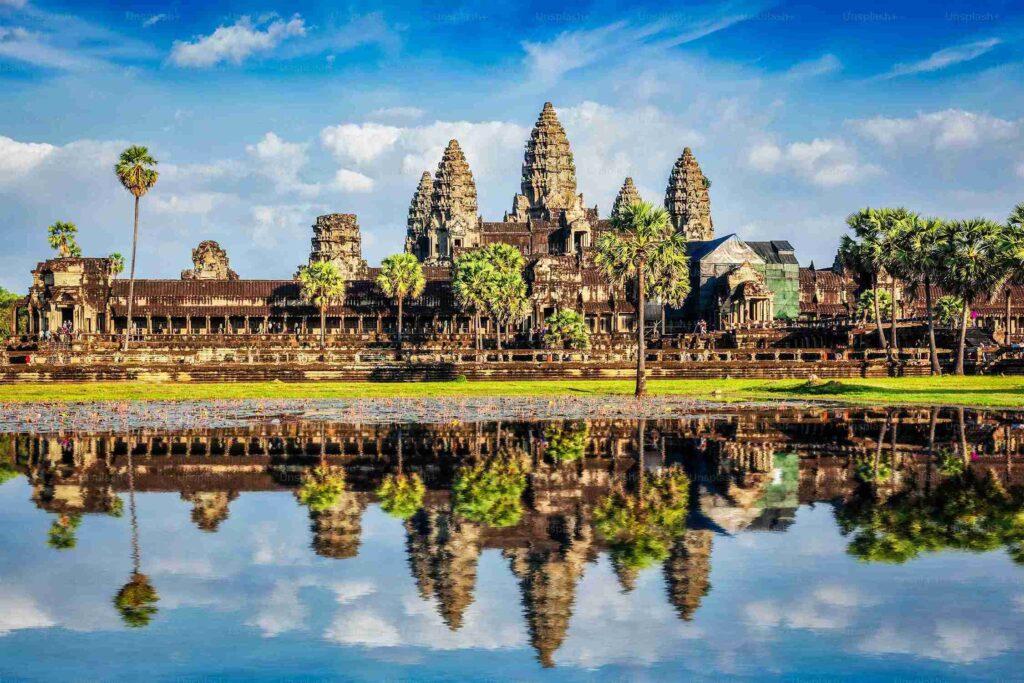Angkor Wat, Cambodia – Travel Tips
Category
Categories
Popular Articles

**Overview of the Destination**
Angkor Wat, a grandly majestic, sprawling temple complex located in Siem Reap, Cambodia, is a testament to the power and religious devotionof the Khmer Empire. Built in the 12th century, it’s the world’s largest religious monument and an astonishing architectural masterpiece. World-famous for its iconic sunrise, intricate bas-reliefs, and the surrounding Angkor Archaeological Park, Angkor Wat is a UNESCO World Heritage Site that every traveler must visit in their lifetime.
**Best Time to Visit**
The best times to visit Angkor Wat are during its peak seasons, from November to February. The temperature is more bearable (23-30 degree Celsius) and the frequency of rainfall is lesser. However, the off-season from June to October sees fewer crowds and lush green landscapes, despite having sporadic rainy periods.
Key events to plan around include the Water Festival in November, which marks the reversal of the flow of the Tonle Sap River, and Khmer New Year in April, both offering unique cultural experiences.
**Climate & What to Pack**
Cambodia is a tropical country with a wet and dry season. The wet season (May to October) brings heavy afternoon rains, while the dry season (November to April) can be intensely hot. Pack light breathable clothing, comfortable shoes for temple exploration, a good sun hat, sunscreen, and a sturdy umbrella or raincoat if you plan to visit during the wet season. Don’t forget your camera!
**Getting There**
The nearest airport to Angkor Wat is Siem Reap International Airport (REP). There are direct flights from many Asian countries and several other connections worldwide. Taxis and tuk-tuks are readily available to transfer you from the airport to your accommodation.
Tourists are required to apply for a visa. Many nationalities can obtain visa-on-arrival, but to avoid lines, consider applying for an e-visa before you travel.
**Getting Around Locally**
Traveling within Siem Reap and to Angkor Wat is usually through tuk-tuks, bicycles, or hired cars. Tuk-tuks are an iconic, fun, and cost-effective way to travel. Bicycles rentals are available and provide a leisurely pace to explore, while hired cars work best if traveling in a group.
**Safety Tips**
Angkor Wat is generally safe, but as with any tourist destination, be wary of pick-pockets. Stick to main paths in the temple complex to avoid landmines, relics of past conflict. Dress modestly as a mark of respect for the religious nature of Angkor Wat—upper arms and knees should be covered. Solo travelers, particularly women, should feel safe walking, but extra caution during the night won’t hurt.
**Top Things to Do & See**
Beyond Angkor Wat’s iconic sunrise, explore the other temples in the Angkor Archaeological Park, such as Bayon and Ta Prohm. Consider hiring a guide to grasp the in-depth history. Don’t miss the sunset at Phnom Bakheng, floating village tours on Tonle Sap Lake, and a stroll around the enticing night markets in Siem Reap.
**Where to Stay**
Luxury travelers can consider Raffles Grand Hotel d’Angkor or Belmond La Résidence d’Angkor. Mid-range travelers might opt for Sakmut Boutique Hotel, while budget travelers can consider Onederz Hostel. Staying near the Siem Reap city center would reap the benefit of multiple dining and shopping options.
**Food & Local Cuisine**
Try Khmer cuisine staples like Amok (coconut curry), Kroeung (spicy paste), and Nom Banh Chok (Khmer noodle). Street food is delicious and affordable but exercise due diligence for hygiene. Parallel Street and Angkor Night Market are famous food streets.
**Cultural & Practical Tips**
The local currency is Cambodian Riel, but US dollars are widely accepted. The local language is Khmer, though English is often spoken in tourist areas. Tipping is appreciated but not mandatory. The voltage is 230V, and most outlets accommodate two-round-pin plugs. Most hotels, restaurants, and cafes offer free Wi-Fi.
**Sustainable or Responsible Travel Tips**
Respect the sanctity of the temples, dress appropriately and stay within designated paths. Supporting local businesses by purchasing handmade souvenirs and eating at local restaurants also contributes positively to the local economy.
**Personal Travel Tip**
Prebook your Angkor Wat ticket online to avoid queues and try to beat the crowds by visiting less crowded temples early in the morning or late in the afternoon. Don’t just rush; take your time to absorb the spirituality and marvel at the architectural genius of this ancient site!










